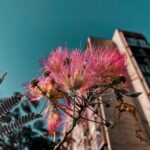When I was younger, I used to pride myself on an inaccurate picture of who I was and how I reacted to stress. I believed myself to be someone who was unaffected by stress: “I just don’t get stressed out. Stressful situations happen, but they just don’t get to me,” I would say, making full eye contact and believing myself thoroughly. What I came to realize later was that … [Read more...] about HOLISTIC SELF-CARE: 15 Harmonious Rituals to Relax + Awaken
Medicinal Herbs
All In The Family: Meet The Mints
Lamiaceae – the "Mint Family" – is a group of roughly 3,500 species of plants with square stalks, simple opposite leaves. Their flowers are bisexual and irregular. Rich in volatile oils, mints are often aromatic, and many species are used as culinary herbs. Many are astringent, and some are bitter. Mint family plants have affinities for a range of systems - the digestive, … [Read more...] about All In The Family: Meet The Mints
Rumex crispus: Spring Yellow Dock
Yellow dock is popping up in my part of the world! I'm ecstatic to see that spring is on its way. It will likely snow several more times before the end of May, but fruit trees are budding – some even blooming – and the greens of dandelion, yarrow, plantain, and yellow dock are beginning to show themselves. I find myself coming to life as the plants yawn and stretch, all of us … [Read more...] about Rumex crispus: Spring Yellow Dock




